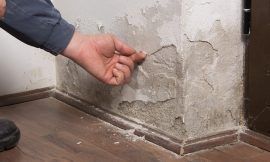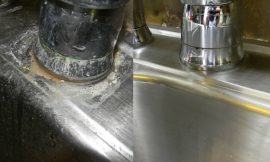
Did you know that over 50 million Americans suffer from allergies each year? That’s a staggering number! Allergies can turn your home, a supposed sanctuary, into a breeding ground for discomfort. But fear not—there’s hope! By taking strategic steps to allergy-proof your living environment, you can significantly reduce allergens and create a healthier home. In this article, we’ll walk you through 7 simple steps that can make a huge difference. Are you ready to breathe easy? Let’s dive in!
Understand Common Allergens in Your Home
When it comes to allergens in the home, it’s crucial to recognize the most common culprits. Pollen, dust mites, pet dander, and mold can often be found lurking in various nooks and crannies. Each of these allergens can trigger different reactions, from sneezing and coughing to more severe respiratory issues.
Seasonal changes play a significant role in allergen levels, especially with pollen from trees, grasses, and weeds peaking during certain times of the year. With spring arriving, for instance, many people start to notice an increase in allergic reactions. It’s essential to be on the lookout for signs that may indicate the need to allergy-proof your home, such as frequent sneezing, itchy eyes, or rashes.
Maintain a Clean Home Environment
Keeping your home clean is one of the best defenses against allergens. Regular dusting and vacuuming can significantly decrease the amount of dust and dander in your space. Make vacuuming a regular part of your routine, using a vacuum cleaner equipped with a HEPA filter, as it can trap small particles that regular vacuums might miss.
When it comes to cleaning products, opt for those specifically designed to reduce allergens. Look for hypoallergenic labels and avoid products with strong fragrances. Effective deep cleaning is vital too – remember to clean carpets and upholstery thoroughly, as these can harbor significant amounts of allergens.
Control Humidity Levels
Humidity is another factor that can exacerbate allergies. Higher humidity levels promote the growth of mold and dust mites, making it essential to keep these levels in check. Ideally, maintaining humidity levels between 30% and 50% contributes to a healthier home environment.
Using dehumidifiers can help manage moisture levels, especially in damp areas like basements. Additionally, ensure proper ventilation in your home to reduce humidity; this might include using exhaust fans in bathrooms and kitchens.
Choose Allergy-Friendly Furnishings
When selecting furniture and decor, it’s important to consider hypoallergenic materials. Choosing items like leather or synthetic fabrics can help minimize the accumulation of dust and allergens.
For flooring, hard surfaces such as tile or laminate, or low-pile carpets, are often better choices for those suffering from allergies compared to thick carpets. Furthermore, when picking furniture, try to avoid upholstered pieces that can trap allergens.
Implement Air Quality Improvements
Air purifiers can play a significant role in reducing indoor allergens and improving air quality. Look for models equipped with HEPA filters for maximum effectiveness.
Don’t overlook regular HVAC maintenance; cleaning and changing filters is essential for maintaining a healthy indoor environment. Also, pay attention to ventilation; proper airflow can help reduce indoor allergens without sacrificing comfort.
Create Pet-Free Zones
If you have pets, creating pet-free zones in your home can be a game changer. Limiting access can significantly reduce allergic reactions due to dander and fur. If you decide to establish these areas, it’s important to be consistent and clear about the boundaries.
Additionally, managing pet dander through regular grooming and cleaning can help keep allergens at bay. Bathing your pets and vacuuming regularly can reduce the amount of dander released into your home environment.
Take Advantage of Natural Remedies
There are many natural solutions to combat allergies, and houseplants can be surprisingly effective. Certain plants help improve indoor air quality and can act as natural air purifiers.
Essential oils are another great addition. They can enhance the atmosphere in your home while also improving air quality. Look for oils that have natural anti-inflammatory properties to create a pleasant and healthy indoor environment without relying on harsh chemicals.
Conclusion
Allergies don’t have to dictate your quality of life! By following these 7 simple steps to allergy-proof your home, you’ll create a healthier environment for you and your loved ones. Remember, small changes can lead to significant improvements! So, begin your journey to a fresher, allergy-friendly home today. If you found these tips helpful, share them with friends or family who might also benefit!






